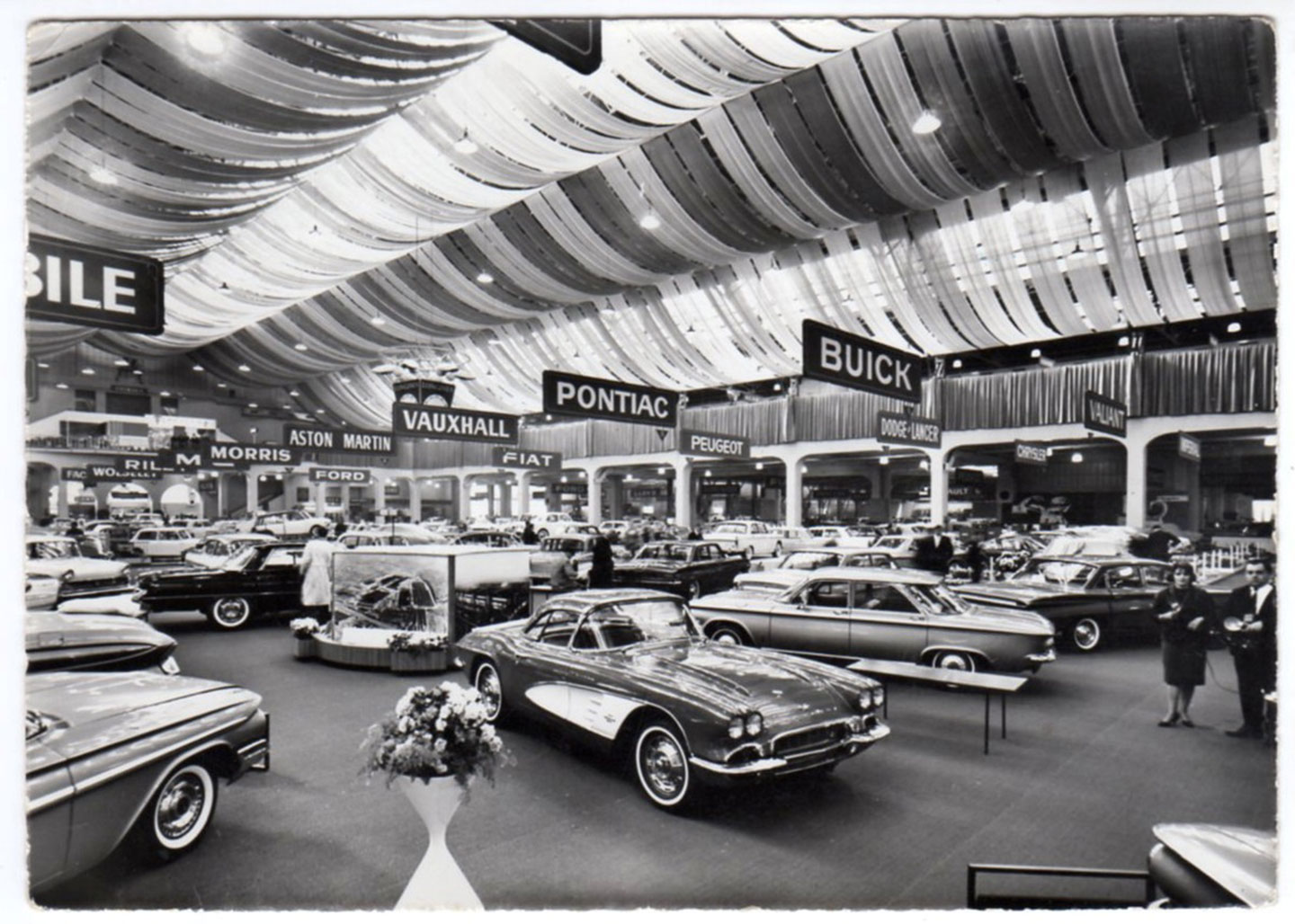Switzerland isn’t the “hub” of the car industry, and this country doesn’t have many well-known car brands. However, the Geneva Motor Show is one of the five largest car shows in the world. The reason why Geneva becomes important is that it plays a neutral role. If Detroit is dominated by American cars, Paris is dedicated to French cars, Frankfurt is dominated by German cars, and Tokyo is dominated by Japanese cars, Geneva is the only place where carmakers can showcase themselves and gauge the interest of consumers.
 In 2017, the Geneva Motor Show celebrated its 112th anniversary through 87 editions
In 2017, the Geneva Motor Show celebrated its 112th anniversary through 87 editions
The idea of a car show was proposed by the Swiss Automotive Club (ACS) in the early 20th century. After several delays, in 1905, despite financial difficulties, ACS decided to organize a car show in the voting area on Georges Favon Avenue from April 29th. The first exhibition area was only 1,200 square meters divided into 37 booths, with a total of 17,500 visitors by the closing day, May 6th.
In the second exhibition in 1906, to welcome more visitors, ACS expanded the exhibition area to 2,200 square meters. A total of 59 car models were displayed, and 25,600 people came to see. In the third exhibition in 1907, held in Zurich, Geneva doubled its area with 90 participating car models and a total of 32,000 visitors.
In 1908, as usual, the fourth exhibition took place, but due to technical reasons, the organizers canceled the event without any notice. It wasn’t until 1911, on the occasion of the sports car exhibition, that the 1908 cars had the opportunity to show off. Then, after 3 years, World War I broke out, and Geneva was put on hold for a long time.
In 1921, the exhibition resumed but was quickly canceled due to a lack of visitors and the devastation caused by the heavy war in Europe. In 1923, the exhibition took place for the first time after the war, but it wasn’t very impressive. It served as a good venue for manufacturers to meet, exchange, and showcase their latest products. With an area of 3,000 square meters, there were 38 chassis and 109 cars on display. Including the press, 30,000 people visited the exhibition in 1923.
In 1924, Geneva faced a shortage of exhibition space like many other exhibitions. The organizers had to connect the voting room with a nearby grass field by a footbridge. However, the press still expressed complaints about congestion, cramped spaces, and poor organization. Also in that year, Geneva was officially recognized as the annual international car show by the International Organization of Motor Vehicle Manufacturers (OICA). Since then, Geneva has become increasingly important and an indispensable event in the automotive industry.
 Booth display of a car manufacturer at the 1924 Geneva Motor Show
Booth display of a car manufacturer at the 1924 Geneva Motor Show
Geneva reached international prominence in the 1950s due to a fundamental change in visitors’ psychology. Before World War II, the Geneva Motor Show was only a place to display future car models. But in the post-war period, it became a “playing field” for carmakers to study the market because most visitors were potential customers. Geneva’s advantage lies in its timing. In March, car manufacturers can summarize the fiscal year and predict business conditions based on consumer preferences here. Because of that, not only the German car industry but also American car manufacturers began to flock to Geneva because it is located in the heart of Europe, in a politically neutral country with a strong purchasing power.
In the 1960s and 1970s, cars became popular in Europe and the United States. Instead of creating new models, the automotive industry focused on improving productivity to meet consumer demand. However, this rapid development also brought about safety requirements. In 1971, Geneva visitors could test the safety level of a car at the car show, a unique marketing form that Geneva applied to win customers’ hearts.
 Geneva Motor Show in 1961
Geneva Motor Show in 1961
After nearly 20 years of prosperity, the 1980s marked the worst period for the global automotive industry. After a period of remarkable development, the United States and Europe became completely dependent on Middle Eastern oil sources. When oil-producing countries stopped supplying, the crisis occurred. In addition, environmental pollution and emission standards also became a headache for manufacturers. At this time, Japanese manufacturers began to rise and declared war on American, German, and French cars. And naturally, there was no better place for this battle than Geneva. Throughout the 1980s, Geneva had to continuously expand the exhibition area to serve the “battlefield” for the American-European-Asian car triangle. The area increased from 38,000 square meters in 1981 to 54,000 square meters in 1985.
 Geneva Motor Show in 2017
Geneva Motor Show in 2017
In 2017, the Geneva Motor Show celebrated its 112th anniversary through 87 editions of this exhibition. There will be up to 900 new car models introduced by 180 leading manufacturers from around the world to car enthusiasts at this year’s Geneva Motor Show.
Anh Duc (trithucthoidai)









































